
International Research Journal of Engineering and Technology (IRJET) e-ISSN: 2395-0056
Volume: 12 Issue: 05 | May 2025 www.irjet.net p-ISSN: 2395-0072


International Research Journal of Engineering and Technology (IRJET) e-ISSN: 2395-0056
Volume: 12 Issue: 05 | May 2025 www.irjet.net p-ISSN: 2395-0072
Priyanka Balkrishna Sapte1
Abstract - This paper delivers a thorough analysis of AIdriven dynamic lane management systems, with an emphasis on Dynamic Lane Reversal (DLR) and Dynamic Lane Assignment(DLA).Itintegratesinsightsfromvariousacademic studies to assess the strengths and limitations of these approaches in improving traffic flow and road safety. The paper first underscores the relevance of dynamic lane strategies in addressing urban traffic issues and enhancing transport systems. It then explores different methodologies used in prior studies, ranging from traditional rule-based frameworks to advanced machine learningand deep learning models. Through systematic evaluation of empirical evidence and theoretical insights, the paper presents key outcomes related to lane reversal and usage control methods. It also examinestheimpactofthesetechniquesonthroughput,travel time, pollution, and driver experience. The findings offer guidanceforurbanplanners,engineers,andpolicydevelopers, while also identifying research opportunities and calling for multidisciplinary efforts and practical testing of AI-based traffic solutions.
Key Words: AI-driven,dynamiclanemanagement,Dynamic Lane Reversal (DLR), Dynamic Lane Assignment (DLA), traffic flow, road safety, machine learning, urban traffic, traveltime,policydevelopment
Urban traffic congestion is a widespread problem that leads to fuel wastage, delays, higher emissions, and slower emergencyresponses.Toaddressthis,artificialintelligenceis beingintegratedintodynamiclanemanagementsystemsasa promisingwaytohandlevaryingtrafficconditionseffectively.
Thesesystems,empoweredbyIoTandreal-timeanalytics, continuouslyadjusttrafficlanesandsignalsbasedoncurrent trafficpatterns.Byusingsensorsandsmartalgorithms,they helpoptimizeflowandincreasesafety.Thegrowingadoption ofAI-poweredautonomousvehicleshasfurtherenabledrealtime, automated lane adjustments for more efficient traffic handling.
Traditional trafficcontrol methods, whichrelyon static lane assignments, often fall short in adapting to changing trafficvolumes.Incontrast,intelligenttransportationsystems usedynamiclanegrouping,whichreassignslanesbasedon currentneeds,providingamoreadaptabletrafficsolution.
This paper focuses on the combination of AI-based lane assignmentandsignaloptimizationatintersections.Through a comprehensive literature review, it aims to enhance
understandingofdynamictrafficstrategiesandinformfuture researchandpracticalapplicationsforbetterurbanmobility.
To improve urban mobility and ease traffic congestion, dynamiclanemanagementsystemsemployacombinationof technologies, primarily powered by the Internet of Things (IoT)andArtificialIntelligence(AI).Thisintegratedapproach connects sensors, communication networks, and data processing tools to enable real-time decision-making and moreefficienttrafficsystems.
StrategicallyplacedIoTdevices suchascameras,radar,and lidar constantlygathertraffic-relateddataincludingvehicle counts, speed, and congestion levels. These devices communicate with infrastructure through Vehicle-toInfrastructure (V2I) systems, exchanging data such as position,speed,anddirection.Thiscontinuousflowofdata enablesthesystemtomonitortrafficconditionsanddetect potentialbottlenecks.
Step 2:
A centralized control unit processes the incoming data via communication technologies like cellular networks or DedicatedShortRangeCommunication(DSRC).Basedonthe analyseddata,appropriatealgorithmsareselected suchas Dynamic Lane Switching, Reversal, or Usage Control to managetrafficaccordingly.
The system then transmits updated lane assignments and signalchangestoelectronicsignageandtrafficlightsonthe roads.Forinstance,incaseofanaccident,itcanreroutetraffic in real time by reallocating nearby lanes to maintain flow. Simultaneously, it offers route suggestions to individual vehicles usingreal-timeconditionsandlanelayouts, which connected vehicles can access and respond to, resulting in smartertravelchoicesandimprovedtrafficefficiency.
This sequence outlines the foundational steps of implementing AI-powered Dynamic Lane Management (DLM). The following sections will explore the specific strategiesandtheireffectsontrafficcongestion.
Dynamic Lane Reversal (DLR) is a proactive traffic management method used to reduce congestion by

International Research Journal of Engineering and Technology (IRJET) e-ISSN: 2395-0056
Volume: 12 Issue: 05 | May 2025 www.irjet.net p-ISSN: 2395-0072
temporarilychangingthedirectionoftrafficflowonspecific lanes, particularly during peak hours. This technique helps maximizeroadusagebyadjustinglanedirectionstoFavorthe highertrafficvolumeside,therebyimprovingtravelefficiency and reducing bottlenecks. The process relies on advanced traffic monitoring systems that make real-time decisions aboutwhenandwheretoapplylanereversals.
DLR enables cities to move beyond rigid infrastructure designs by reallocating road space based on actual traffic conditions. This dynamic strategy, first introduced in academic research, aims to increase capacity in congested areasbyusinglanesfromthelessbusydirection.
ByapplyingDLRmethods,urbancentrescanmakebetteruse of existing roads, adapt quickly to traffic fluctuations, and respond to emergencies more effectively. These systems depend on real-time data such as vehicle counts, queue lengths,andspeeds andintelligentalgorithmstodetermine the optimal moments for changing lane directions. An evacuation strategy ensures lanes are cleared safely and swiftly before the direction is reversed. This concept is typically tested using the SUMO (Simulation of Urban Mobility)softwareunderdifferenttrafficconditions.
1. Literature Review
Theinitialconceptofdynamicspaceallocationbeganwith IntermittentBusLanes(IBL),andlaterextendedtoReversible Lane Systems (RLS). RLS allows traffic to flow in either directiononalaneatdifferenttimes,improvingcapacitywith minimal infrastructure upgrades. These systems are used globallytoalleviatecongestion,especiallyduringrushhours oremergencies.
However, traditional RLS approaches rely on fixed schedulesandmanualcontrol,whichcanbeinefficientand operationallycomplex.Recentstudiesproposedautomated DLR models using real-time traffic data and autonomous vehicletechnologies.Thesemodelstreattheproblemoftraffic direction as a complex optimization task, solved through techniqueslikeIntegerLinearProgramming(ILP)andgenetic algorithms. Yet, these solutions can be computationally intensiveandnotalwaysfeasibleforlargenetworks.
The paper referenced in [1] is considered a key contribution in the DLR domain, and its methodology and resultsareanalyzedindepthhere.
2. Methodology:
Thestudy’smethodologyisbuiltonthreecorecomponents: thesimulationenvironment,thelanereversalstrategy,anda reinforcementlearning(RL)agent.
A. SimulationSetup:
The researchers used the SUMO traffic simulation platformtomodelafour-wayintersectionwithspecific
lanearrangements.Trafficsignalswerecontrolledbyan actuated system based on vehicle gaps, ensuring responsivenesstoreal-timeflow.

B. LaneReversalStrategy:
Initially, vehicles were blocked from entering the reversible lane to ensure it could be cleared before allowing traffic from the opposite direction. However, this created traffic disruptions. To address this, a new methodintroduced"dynamicspecialzones"withinthe reversible lane. These zones guided vehicles to switch lanesmoreefficiently,usingabufferzoneof50metersto reduce disruptions and ease transitions during lane evacuation.
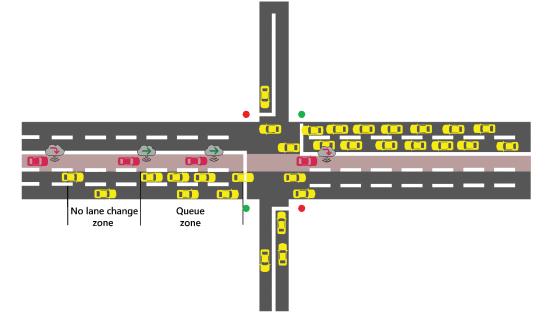
C. Reinforcement Learning Agent:
A reinforcement learning (RL) model was implemented to decide when to reverse lane directions at five-minute intervals.UsingtheDoubleDeepQ-Network(DQN)approach withaduelingarchitectureandane-greedystrategy,theRL agentmadedata-drivendecisionsbasedontrafficconditions likeaveragewaittimesandvehiclecounts.

International Research Journal of Engineering and Technology (IRJET) e-ISSN: 2395-0056
Volume: 12 Issue: 05 | May 2025 www.irjet.net p-ISSN: 2395-0072
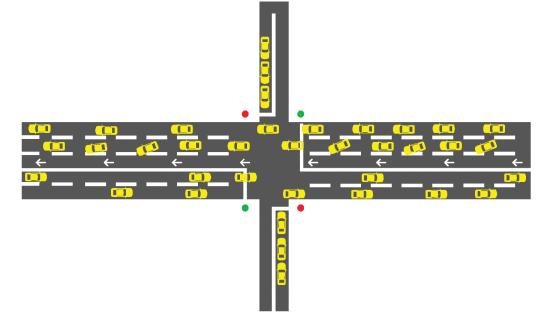
Figure3:Finalizationoflanereversal
Together, these elements created a system capable of dynamically adapting lane directions at an intersection to reduce delays and enhance traffic flow. The following sections go into greater detail on each component and the outcomesofthesimulation.
3. Components
This part describes the internal workings of the Reinforcement Learning (RL) agent used for managing dynamiclanereversal.
A.RL Architecture:
The RL agent applies a Dueling Deep Q-Network (DQN) approach. This setup helps the system determine which actionsaremorebeneficialinvarioustrafficscenarios.The agent follows an epsilon-greedy exploration strategy with exponentialdecay,whichbalancestryingnewdecisionsand relyingonpreviouslysuccessfulones.
C. State Representation
Theagentobservesthefollowingvariablestounderstandthe trafficstate:
deastanddwest:indicatorsofthecurrentdirection ofthereversiblelane.
wteastandwtwest:averagewaittimesofvehicles headingeastboundandwestbound.
veast/leastandvwest/lwest:numberofvehicles perlaneintheeastboundandwestbounddirections.
Thefullstatevectorcanbeexpressedas:

Thisstateisupdatedeveryfiveminutesandaggregatedover thatduration.
Theagenthastwopossibleactions:
0:Keepthecurrentdirectionofthereversiblelane.
1:Reversethedirection.
The action to reverse is only executed after the reversible lanehasbeenfullyevacuated.
Tomeasureperformance,theRLagentusesarewardbased on reducing vehicle delay. The reward at time step i is calculatedas:
Thismeansthatthelowerthecombinedaveragewaittime forbothdirections,thehigherthereward,guidingtheagent tomaketraffic-efficientdecisions.10
4. Results and Conclusions
TheresearchersevaluatedtheDynamicLaneReversal(DLR) strategy across seven simulated traffic scenarios to determine how well it adapts to different traffic patterns. These scenarios varied in the intensity and frequency of demandfluctuations,especiallyalongthemainroadofafourwayintersection.

Figure4:Scenario1-Severedemandchangeevery15 minutes
beforeNNweightupdate
Table1:ParameterValuesofDueling-DDQNAgent

Volume: 12 Issue: 05 | May 2025 www.irjet.net
Thereinforcementlearning(RL)agentwastrainedusingthe mostdemandingscenario wheretrafficvolumesalternated sharplybetween1,400and600vehiclesperhourevery15 minutes thentestedonallsevenscenarioswithoutfurther training.Thisallowedtheteamtoassesstheagent’sabilityto generalizeacrossvariedconditions.
Keyfindingsinclude:
The DLR system consistently outperformed traditionalstaticlaneconfigurationsacrossalltest scenarios.
It significantly improved metrics like average trip duration,fueluse,andemissions(includingCO₂,CO, andNOx).
The greatest performance gains occurred in scenarios with severe and less frequent demand shifts, as this minimized disruptions caused by frequentlanechanges

4 Every30minutes:800–1200veh/h 2Hours
5 Every
3:DLRSchemeResultsComparedtoStaticLane Configuration
One notable insight was that the timing of lane reversals aligned closely with traffic build-up, showing that the RL agent made intelligent and timely decisions. However, in somecases suchasscenario7 certainreversalsseemed unnecessary. To refine the model, the study suggests introducingapenaltyintheRLrewardsystemforexcessive laneswitching,whichcouldreduceunneededreversalsand furtherimprovetrafficflow.

6:Scenario1-Timingsoflanereversalwithrespect toaccumulations
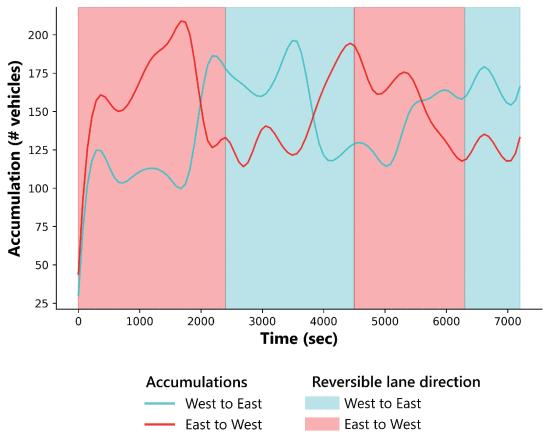
7:Scenario2-Timingsoflanereversalwithrespect toaccumulations

International Research Journal of Engineering and Technology (IRJET) e-ISSN: 2395-0056
Volume: 12 Issue: 05 | May 2025 www.irjet.net p-ISSN: 2395-0072

Figure8:Scenario3-Timingsoflanereversalwithrespect toaccumulations

Figure9:Scenario4-Timingsoflanereversalwithrespect toaccumulations

Figure10:Scenario5-Timingsoflanereversalwith respecttoaccumulations

Figure11:Scenario6-Timingsoflanereversalwith respecttoaccumulations

Figure12:Scenario7-Timingsoflanereversalwith respecttoaccumulations

Figure13:Impactoftrafficsignalphaseduring initializationoflanereversal

International Research Journal of Engineering and Technology (IRJET) e-ISSN: 2395-0056
Volume: 12 Issue: 05 | May 2025 www.irjet.net p-ISSN: 2395-0072
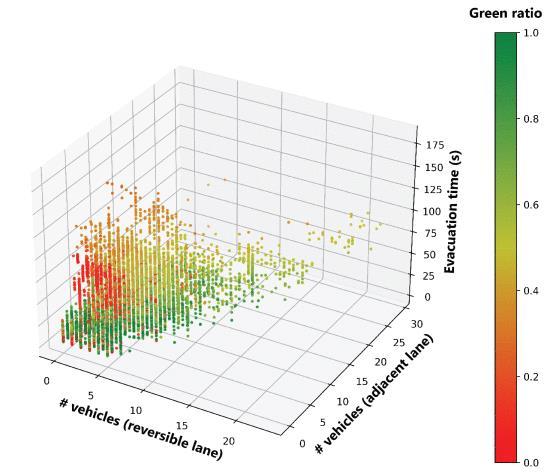
14:Impactofratioofgreentimeduringlane evacuationtoevacuation
ThisstudyintroducedanovelDynamicLaneReversal(DLR) modelthatcombinesreinforcementlearningwithastrategic laneevacuationplantoimprovetrafficflowatintersections experiencing variable demand. Although the RL agent was trainedononlyonehigh-demandscenario,itperformedwell acrossalltestcases,showingstrongadaptability,efficiency, andreductionsinbothtraveltimesandvehicleemissions.
Looking ahead, several research directions could further enhancethismodel:
1. ExploreMoreTrafficScenarios: Testingthemodelunderabroaderrangeoftraffic conditions will help identify the boundaries of its effectiveness.
2. ImproveEvacuationStrategies: Investigatingalternativemethodsforclearinglanes couldreducetransitiontimesanddisruptionseven further.
3. RefineRLTimingDecisions: Analyzing the optimal time intervals for decisionmaking (i.e., when the RL agent should act) may allow for more flexible and responsive traffic control.
4. Multi-AgentReinforcementLearning: Incorporating additional agents such as ones controllingtrafficsignals couldenablecooperative decision-making between systems, improving overallnetworkperformance.
5. ScaletoLargerNetworks: Expandingthemodel from a singleintersection to entire corridors or city networks would test its practicalityonabroaderscaleandassesshowwellit handlesinterconnectedsystems.
ThesefuturedirectionsaimtomoveDLRstrategiescloserto real-worlddeploymentandestablishtheirviabilityindiverse urbantrafficenvironments.
Signalizedintersectionsareessentialcomponentsofurban transportationsystemsandoftenbecomebottlenecksduring peak hours due to fluctuating traffic volumes. One major factorcontributingtothiscongestionisthestaticassignment of lanes where each movement (left, though, right) is allocated a fixed number of lanes regardless of real-time demand.
Traditionalsignalcontrolstrategiestypicallyoptimizesignal timings (like green time or cycle length) to accommodate changing traffic, but they maintain constant lane assignments.Thisstaticapproachoftenresultsininefficient laneusageanddegradesoverallintersectionperformance.
DynamicLaneAssignment(DLA)offersasmartersolution.As apartofintelligenttransportationsystems,DLAdynamically reallocates lanes based on current traffic volumes for different turning movements. For instance, if left-turn demand increases during a certain time period, DLA may assign more lanes to left-turning traffic while adjusting throughandright-turnlaneallocationsaccordingly.
To ensure drivers are informed, Variable Message Signs (VMS) are used to display real-time lane configurations as vehiclesapproachintersections.DLAhasbeensuccessfully applied in contexts like freeway shoulder use during rush hours,demonstratingitseffectivenessinreducingdelaysand enhancingsafety.
AnumberofstudieshaveexaminedwhereandhowDynamic LaneAssignment(DLA)canbemosteffectivelyapplied.One studyusedthreecriteriatoidentifysuitableintersectionsfor DLA:
VolumeChangeovertime(dailytrafficvariation),
VolumePerLane,and
VolumetoCapacityRatio,whichwasfoundtobethe most reliable indicator for determining potential locations.
Results from this research showed that using DLA led to a noticeable improvement in traffic flow, including a 15% reductioninoverallintersectiondelay,confirmingitsability tomitigatecongestion.
Another research effort by Zhang et al. introduced a mathematicalmodeltoidentifythebestlaneconfiguration. Theirgoalwastominimizethecriticallaneflowratio,which compares the number of vehicles to the saturation flow

International Research Journal of Engineering and Technology (IRJET) e-ISSN: 2395-0056
Volume: 12 Issue: 05 | May 2025 www.irjet.net p-ISSN: 2395-0072
capacity of a lane. After testing their model at four intersections, they observed lower delay times and better lane utilization demonstrating that DLA significantly improvedtrafficoperations.
Inaseparatestudy,researchersfocusedononeintersection approachandcreatedatime-spaceoptimizationmodel.Their methodproducedanideallaneconfigurationthatofferedthe highestoperationalbenefits.
However, most past studies have concentrated on the theoreticalorperformanceaspectsofDLA.There’sstillalack ofpracticalimplementationguidelines.Additionally,manyof thesemethodsrequireextensivedelaycalculationsforevery possible lane configuration, which can be time-consuming andreducetheagilityofDLAsystemsinreal-time.
To address these limitations, the current paper turns to a studythatdevelopedanArtificialNeuralNetwork(ANN)to rapidly predict optimal lane configurations. This model provedusefulfordetermininglanesetupsbasedonvarying trafficvolumeswithoutrunningexhaustivesimulationseach time.
The methodology of the study focused on training and evaluating an Artificial Neural Network (ANN) model designed to optimize lane assignments at signalized intersections. This model was based on a previously developedMATLABtoolthatgeneratedasyntheticdatasetof turningmovementvolumesandtheircorrespondingoptimal laneassignments.
Theprimaryobjectivewastominimizevehicledelay,using delayestimationmethodsdefinedintheHighwayCapacity Manual.Aminimumcycletimeof60secondswasmaintained toensurepedestriansafetyatcrossings.

LaneAssignmentandSignalPhasing
The DLA model used an approach-based phasing scheme, meaningeachapproachtotheintersectionhaditsownphase thatincludedallturningmovements(left,though,andright). Only protected left turns were considered, assuming no conflictswithopposingtraffic.
The model was adaptable to different lane and approach layouts, with the assumption that the number of incoming and outgoing lanes remained equal. A binary variable was
used to define whether a movement was allowed from a specificapproach.
Togeneratevarioustrafficscenarios,thestudyappliedthe followingformulas:


Figure16:Geometriclayoutofthestudyintersection
StudyIntersection
Tovalidatethemodel,realtrafficdatawascollectedfroma four-leg intersection in Dhahran, Saudi Arabia. The intersection used pre-timed signals and the same phasing schemedescribedabove.Approachvolumeswererecorded duringmorningandeveningpeakhours.

International Research Journal of Engineering and Technology (IRJET) e-ISSN: 2395-0056
Volume: 12 Issue: 05 | May 2025 www.irjet.net p-ISSN: 2395-0072
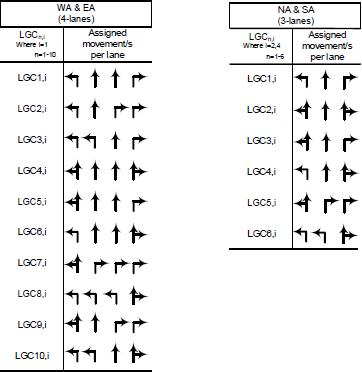
Figure17:Lgcsconsideredinthedevelopedmodel
Period WA
AMpeak(6:30–7:30) 1628 474 1462 80 3644
PMpeak(16:00–17:00) 2199 669 1921 525 5314
Table4:Approach-basedphasingscheme
Onlyouterlaneswereallowedtoserveassharedlanes.All valid lane group combinations (LGCs) for three- and fourlanelegswereidentifiedandanalyzedusingtheDLAmodel.
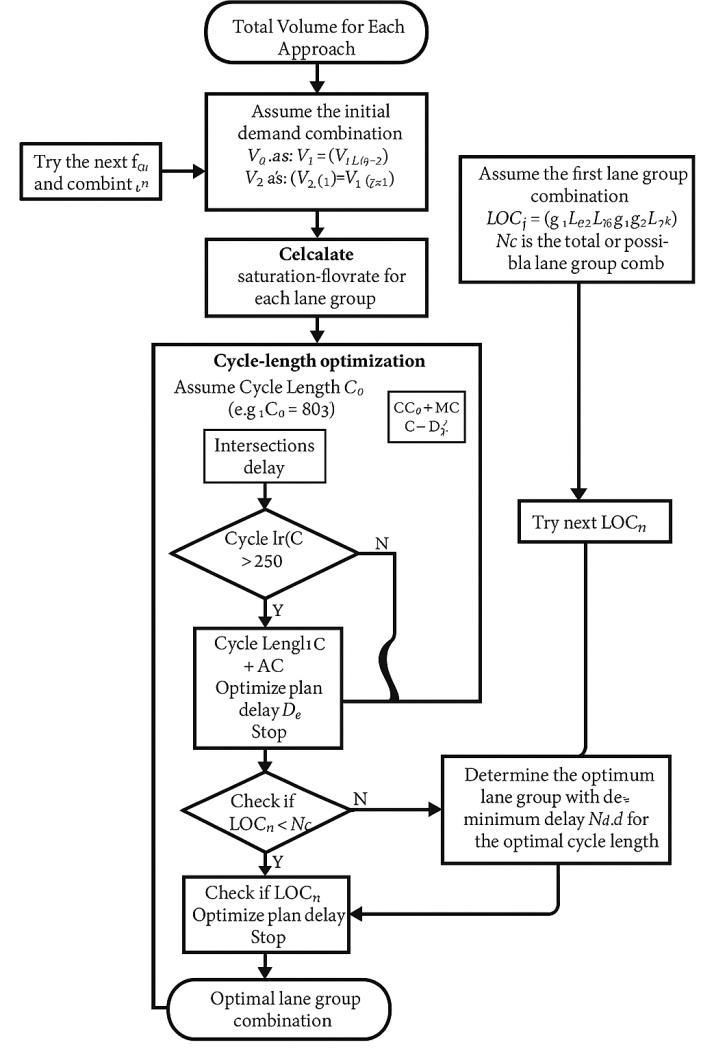
Figure18:FlowchartforthedevelopedDLAmodel
Fromthisprocess,over 600,000possibleturningmovement combinationsweregeneratedandpairedwithoptimallane assignments.Thesedatasetswerethenusedtotrainandtest theANNmodel.
Artificial Neural Networks (ANNs) are machine learning modelsinspiredbythehumanbrain.Likehowpeoplelearn fromexperience,ANNslearnfromdata,recognizingpatterns and relationships between inputs and outputs. They are especially useful in transportation problems due to their ability to model complex, nonlinear systems without requiringexplicitmathematicalrelationships.
In this study, a feedforward ANN was developed using MATLAB to predict the best lane configurations at a signalizedintersection.Thenetworkconsistsof:
Aninputlayerthatreceivestrafficvolumedata, Hiddenlayersthatprocesstheinformation,and

International Research Journal of Engineering and Technology (IRJET) e-ISSN: 2395-0056
Volume: 12 Issue: 05 | May 2025 www.irjet.net p-ISSN: 2395-0072
An output layer that provides the optimal lane assignments.
Eachneuroninthenetworkconnectstothoseintheprevious andfollowinglayers,processinginputswithassignedweights andbiases.
Since there’s no universally agreed-upon method for selectingthebestnetworkarchitecture,theresearchersused a trial-and-error approach. They started with a small network and gradually increased complexity until they achievedhighaccuracywithoutoverfitting.
TotrainandtesttheANN,arandomsampleof150,000lane assignmentexampleswasdrawnfromthelargerdataset 75,000eachfromAMandPMpeakhourscenarios.Thedata wassplit:75%fortrainingand25%fortesting.
Severaltrainingalgorithmswereevaluated,including:
Levenberg-Marquardt,
ResilientBackpropagation,
ScaledConjugateGradient,
BFGSQuasi-Newton,
BayesianRegularizationBackpropagation,and
VariableLearningRateBackpropagation.

TheBayesianRegularizationBackpropagationmethodwas chosenforitssuperiorpredictionaccuracy.Itcombinesthe Levenberg-Marquardt optimization technique with a regularizationprocessthatimprovesgeneralization,reducing overfitting by balancing error minimization and weight control.
Inthiscase,theoptimalANNstructureincludedthreehidden layers, each with 14 neurons, achieving an average testing
accuracyof92%.Thismodel effectivelypredictedthe best laneassignmentforvaryingtrafficconditions.
Signalizedintersectionsgreatlyinfluencetheperformanceof an entire traffic network. The Dynamic Lane Assignment (DLA)methodisanintelligenttransportationstrategythat improves traffic operations at these intersections by adjustinglaneusageinrealtimeaccordingtocurrenttraffic demands.
Inthisstudy,theauthorsutilizedapreviouslydevelopedDLA model to generate large datasets of turning movement volumesandtheirideallaneassignments.Trafficdatawere collected from a four-leg intersection during morning and eveningrushhours,capturingthenaturalvariabilityintraffic flowthroughouttheday.
By altering the percentage of turning volumes in 10% increments, the researchers produced over 600,000traffic scenarios for each peak period. The model computed the optimal lane assignments for each scenario, resulting in detaileddatasets.
From these datasets, a sample of 150,000 turning combinationswasselected.75%ofthedatawasusedtotrain anArtificialNeuralNetwork(ANN),andtheremaining25% was used for testing. After extensive testing, the bestperforming ANN model was configured with three hidden layers of 14 neurons each, achieving an average testing accuracyof92%.
ThestudydemonstratesthattheANNmodelisareliableand efficienttoolfordeterminingoptimallaneconfigurations.It holds significant potential for improving real-time traffic controlatsignalizedintersectionsbyquicklyandaccurately respondingtochangesintrafficvolumes.
Building on the promising results of the Dynamic Lane Assignment(DLA)model,severalareashavebeenidentified for future research to enhance its practicality and effectiveness:
1. Real-WorldTesting:
Thenextcrucialstepistomovebeyondsimulations and validate the model in real-world traffic conditions.ImplementingDLAatliveintersections with variable demand would help confirm its reliabilityandperformanceinactualsettings.
2. ParameterOptimization:
Fine-tuning model parameters such as how turningvolumesareincrementallyadjusted could further improve DLA’s decision-making accuracy. This involves tailoring the system to real traffic dynamicsforbetterresponsiveness.

International Research Journal of Engineering and Technology (IRJET) e-ISSN: 2395-0056
Volume: 12 Issue: 05 | May 2025 www.irjet.net p-ISSN: 2395-0072
3. Advanced Machine Learning Methods: While this study used Artificial Neural Networks, exploring other techniques like Deep Learning or Reinforcement Learning may yield even better results. Comparing different models can help identify the most efficient approach for lane optimization.
4. Applicability Across Various Intersection Types: Testingthemodelina widerrangeofintersection designsandtrafficpatternswouldhelpevaluateits generalizability.Understandinghowitperformsin different layouts would support broader implementation.
5. Long-Term Impact Assessment: Studying how DLA affects traffic patterns, congestion levels, and network performance over extendedperiodsisessential.Longitudinalstudies couldreveal thelastingbenefitsandlimitationsof dynamiclanestrategies.
By exploring these areas, researchers and transportation planners can further refine DLA systems to make urban trafficmanagementmoreefficient,adaptive,andsustainable.
Iwouldliketoextendmysincerethankstoalltheauthors whoseresearchpapersformedthebasisofmyinterpretation. Theirvaluablecontributionshavesignificantlyenrichedour understandingofthesubjectmatter.
References
[1]M.R.Pashaetal.,"DynamicLaneManagementwithIoT forReal-timeLaneConfigurationandTrafficFlow,"20242nd InternationalConferenceonComputer,Communicationand Control(IC4),Indore,India,2024.
[2] M. Jaiswal et al., "Real-time Traffic Management in Emergency using Artificial Intelligence," 2020 8th International Conference on Reliability, Infocom Technologies and Optimization (Trends and Future Directions)(ICRITO),Noida,India,2020.
[3]W.K.M.Alhajyaseenetal.,"Theeffectivenessofapplying dynamic lane assignment at all approaches of signalized intersection,"CaseStudiesonTransportPolicy,vol.5,no.2, pp.224-232,2017.
[4] K. Katzilieris, E. Kampitakis, and E. I. Vlahogianni, "Dynamic Lane Reversal: A reinforcement learning approach,"20238thInternationalConferenceonModelsand Technologies for Intelligent Transportation Systems (MTITS),Nice,France,2023.
[5] M. Hausknecht et al., "Dynamic lane reversal in traffic management,"201114thInternationalIEEEConferenceon IntelligentTransportationSystems(ITSC),pp.1929-1934.
[6] J. Viegas and B. Lu, "The intermittent bus lane signals settingwithinanarea,"TransportationResearchPartC,vol. 12,no.6,pp.453-469,2004.
[7] B. Wolshon and L. Lambert, "Reversible lane systems: Synthesisofpractice,"JournalofTransportationEngineering, vol.132,no.12,pp.933-944,2006.
[8]J.H.KellandI.J.Fullerton,Manualoftrafficsignaldesign, 1991.
[9] S. Chen et al., "An optimal dynamic lane reversal and traffic control strategy for autonomous vehicles," IEEE TransactionsonIntelligentTransportationSystems,vol.23, no.4,pp.3804-3815,2021.
[10]H.VanHasseltetal.,"Deepreinforcementlearningwith doubleq-learning,"ProceedingsoftheAAAIConferenceon ArtificialIntelligence,vol.30,2016.
[11]Z.Wangetal.,"Duelingnetworkarchitecturesfordeep reinforcement learning," International Conference on MachineLearning,pp.1995-2003,2016.
[12]K.J.Assietal.,"QuickOptimalLaneAssignmentUsing ArtificialNeuralNetworks,"2019InternationalConference onInnovationandIntelligenceforInformatics,Computing, andTechnologies(3ICT),Bahrain,2019.
[13] K.J. Assi, "Application of dynamic lane grouping and artificialintelligencetechniquesinpredictingtheoptimum lane groups at isolated signalized intersections," KFUPM, SaudiArabia,2017.
[14]B.MehranandH.Nakamura,"Consideringtraveltime reliability and safety for evaluation of congestion relief schemesonexpresswaysegments,"IATSSResearch,vol.33, no.1,pp.55-70,2009.
[15] X. Jiang et al., "Dynamic Lane Grouping at Signalized Intersections: Selecting the Candidates and Evaluating Performance,"ITEJournal,vol.85,no.11,pp.42,2015.
[16]L.ZhangandG.Wu,"Dynamiclanegroupingatisolated intersections: problem formulation and performance analysis,"TransportationResearchRecord,vol.2311,no.1, pp.152-166,2012.
[17]Z.Zhongetal.,"Anoptimizationmethodofdynamiclane assignmentatsignalizedintersection,"ICICTA,2008.
[18]H.C.Manual,HighwayCapacityManual,WashingtonDC, 2010.

International Research Journal of Engineering and Technology (IRJET) e-ISSN: 2395-0056
Volume: 12 Issue: 05 | May 2025 www.irjet.net p-ISSN: 2395-0072
[19] M.S. Dougherty et al., "The use of neural networks to recogniseandpredicttrafficcongestion,"TrafficEngineering &Control,vol.34,no.6,1993.
[20]U.GazderandN.T.Ratrout,"Anewlogit-artificialneural network ensemble for mode choice modeling," Journal of AdvancedTransportation,vol.49,no.8,pp.855-866,2015.
[21]B.PradhanandM.I.Sameen,"ModelingTrafficAccident Severity Using Neural Networks and Support Vector Machines,"inLaserScanningSystemsinHighwayandSafety Assessment,Springer,pp.111-117,2020.
[22] S.M. Rahman, "Application of artificial intelligence modelsintrafficflowprediction,"KFUPM,2010.
[23] R. Reed and R.J. Marks, Neural Smithing: Supervised Learning in Feedforward Artificial Neural Networks, MIT Press,1999